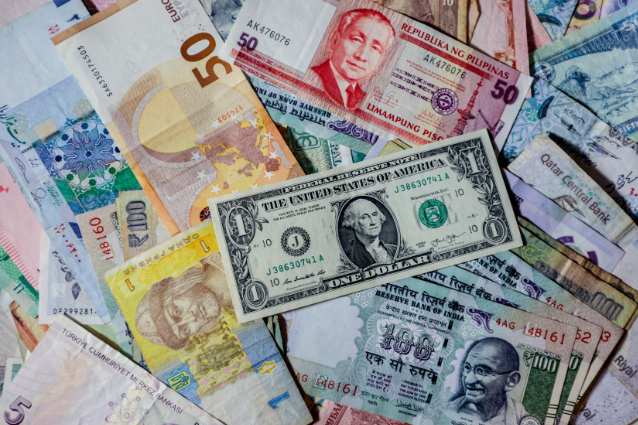The DXY index, which measures the value of the dollar against six major currencies, stands at its highest level since 2002.
Investors need to keep a close eye on this, because periods of marked dollar strength in the past have seen chaos in emerging markets, but also weakness in developed market stocks and commodity prices for good measure.
The big question now is whether the run in the DXY index – and thus the dollar against a basket comprising the euro, the yen, sterling, the Canadian dollar, Swedish krona and Swiss franc – is paving the way for a fourth major advance in the US currency since the so-called ‘Nixon shock’ and America’s withdrawal from the gold standard and Bretton Woods in 1971, following bull runs in the buck during 1971-1979 and 1985-1995 and 2011-2016.
The Federal Reserve’s interest rate increases and acceleration this month of its Quantitative Tightening program are, respectively, increasing the returns available on dollars relative to other currencies and at the same time draining dollars from the global economy, to almost create a shortage of bucks.
If the dollar does continue to rise, this is something investors would need to ponder for three reasons.
Emerging markets
Emerging stock markets have been particularly sensitive in the past to the greenback, falling when the buck bounces and gaining when it rolls over.
Dollar strength preceded the 1982 Mexican debt crisis and 1994’s so-called ‘Tequila crisis,’ also in Mexico, as well as the Asia and Russian debt and currency collapses of 1997-98 which also heralded a period of deep EM equity underperformance relative to developed arenas.
The higher the dollar goes, the harder it is for many emerging nations to fund their imports and pay interest on their dollar-priced debts, hitting growth and denting investor confidence in assets priced in their local currencies in the process.
It may be no coincidence that emerging nations are getting into difficulty as the dollar goes up – and up. Zambia and Sri Lanka have defaulted, and Pakistan has called in the International Monetary Fund.

Global risk appetite
Developed stock markets and global risk appetite more generally may also be affected.
A dash out of emerging markets and into developed ones could also be a harbinger of a shift in risk appetite and this would be a marked change after a bull run which dates back to 2009 in almost any asset class.
It is also worth noting that global stocks eventually came a cropper in 2000 after sustained dollar gains, thrived on the greenback’s weakness of 2002-07 and then plunged again as the buck briefly soared in 2007-09 and real trouble arrived in the shape of the Great Financial Crisis.
All of this makes the broad stock market advances forged this decade appear like an interesting outlier, although a rising dollar did not immediately interfere with the bull market of the late 1990s.
Commodities
Commodities also have tended to do better during periods of dollar weakness and less well during periods of greenback gains (although 2021’s surge in raw material prices is an eye-catching outlier).
This is because most raw materials, except for cocoa, are priced in dollars, so if the dollar goes up then the product becomes more expensive to buy in local-currency terms, potentially dampening demand.

In this context, summer’s weakness in copper and iron ore is eye-catching, as both can be seen as good proxies for global economic activity, due to copper’s use in cars, construction and a whole range of industries and iron ore’s importance in the steel-making process.
Whether central bankers, economists and politicians become alarmed by dollar strength (should it continue) remains to be seen, as domestic currency weakness means imports are more expensive and that can stoke inflation even if exports may get a boost.
At 110, the DXY benchmark is still some 9% below the peak it reached in 2001 and it stands miles below the 165-level reached in spring 1985 when the pound ultimately slumped to $1.05.
However, the authorities did intervene to stem the dollar’s rise in 2016, at that year’s G20 meeting which reputedly spawned the secretive Shanghai Accord, and in 1985 after the G5 (of France, West Germany, the UK, Japan and the USA) arranged the Plaza Accord, which forced down the dollar relative to the franc, deutschmark, pound and yen.
As the world’s reserve currency, the greenback provides the green grease which lubricates the global economy and if American monetary policy leads to a shortage of dollars, then further upsets and dislocations are quite possible.
Russ Mould is investment director at AJ Bell.
See more – Seven issues in global markets to watch in September

